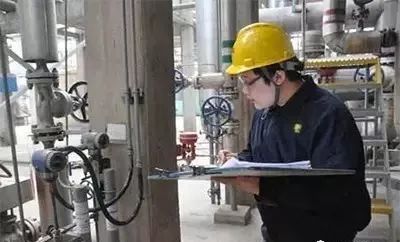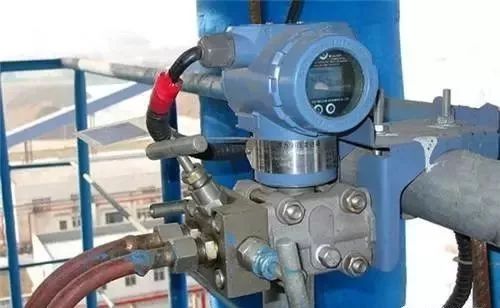The power supply and start-stop of the meter should be what every instrument practitioner should master. So, what exactly does the instrument supply and start-stop? What other places to pay attention to?
Instrument and system power restoration
In addition to normal power outages, the instrument and power supply system are often randomly disconnected. Large-scale power outages have power distribution room trips and power failures, lightning strikes and power failures; local or single instruments are powered off, and the fuses are naturally aged and blown out. In addition, most of them are caused by short circuit and ground faults. Regardless of the cause of the power outage, in order to ensure the production should be restored in time.
So, some people might say that restoring power is not pressing the reset button, the board switch?
Restoring the power supply is really easy, but finding the switch position right away is not that simple. Finding the switch position right away is entirely up to your usual observation and memory. Therefore, it is recommended to remember the installation location of the power switch, although this is not technical, but it is very important.
First remember which electrical distribution room the meter's total power source is. The switch is installed on the screen of the power distribution room. There is no sign. It is recommended to keep a note on the notebook. Also remember the location of the power box of the meter and the power switch of each meter. You might say that there are signs to remember? Also remember. If the word of the sign is blurred, the sign is not there. If you can't re-check it, you can check it again. However, it is unsafe to check the instrument and remove the switch. Therefore, it is advantageous for the work to record the position of each power switch of the meter on the notebook. There is also a dual power supply switch, which may be automatic, but remember that there is no harm.
Frequently encountered problems are:
The fuse of the instrument is broken, and it is still insured after replacement, indicating a short circuit or ground fault.
Suggest:
(1) First remove the power cord from the instrument end, wrap the cable with insulating tape, and then send power;
(2) If the insurance is still inflated, it indicates that there is a problem with the power supply line, and the power supply line is mainly checked;
(3) If the fuse fuse is continuous, there is a short circuit fault inside the meter;

Start and stop of the instrument
Take the pressure and differential pressure transmitter as an example.
It is necessary to check the zero position of the pressure and differential pressure transmitter. Regular discharge of the transmitter will involve the start and stop of the transmitter. Therefore, the correct starting pressure and differential pressure transmitter are also one of the skills that need to be mastered. Now introduced as follows:
1In-situ installation of pressure transmitters for shutdown and commissioning
The pressure transmitter installed on site is basically the same as the spring pressure gauge, ie there is only one sampling valve and some have a discharge valve.
Outage method:
When the machine is stopped, close the sampling valve of the pressure transmitter, slowly open the discharge valve, and remove the pressure to be measured. When there is no discharge valve, the pressure can only be removed by slowly loosening the joint thread of the pressure transmitter. Be careful of the medium pressure to injure people during operation.
Method of operation:
Simply put the sampling valve of the pressure transmitter into operation.
2 remotely mounted pressure transmitters are out of service and put into operation
The remote pressure transmitter has at least three valves and a pressure guiding tube connected thereto, the sampling valve is used for sampling and cutting the process medium, and the sewage valve is used for flushing the pressure guiding tube and removing the condensate or gas of the pressure guiding tube; The shut-off valve for connecting the pressure tube to the pressure transmitter has a secondary valve.
Outage method:
When the machine is out of service, close the secondary valve of the pressure transmitter, and then remove the pressure through the draining, exhausting or draining pipe drain valve on the measuring chamber of the pressure transmitter. The sampling valve should also be closed when necessary. Transmitters with spacer fluids are not free to open the drain valve to relieve pressure.
Method of operation:
When the transmitter for general measurement media is put into operation, the secondary valve can be opened. However, if the steam pressure measurement of the pressure guiding tube has been drained, first close the secondary valve and the drain valve, then open the sampling valve, then open the drain valve to flush the pressure guiding tube, and after closing the drain valve, wait for more than half an hour to guide The steam pipe is filled with steam condensate and the secondary valve is opened. Use the exhaust valve of the changer measuring chamber to remove air.
3 Differential pressure transmitters are out of service and put into operation
The differential pressure transmitter has at least five valves connected thereto, two sampling valves for sampling and cutting the process medium; two sewage valves for flushing the pressure guiding tube or removing the condensate or gas of the pressure guiding tube; The connection between the pressure tube and the transmitter is a three-valve or five-valve group. The operation and operation of the differential pressure transmitter are mostly the operation of a multi-three valve group.
Outage method:
When the differential pressure transmitter is out of service, the steps of closing the three valve group are: first close the negative pressure valve; then open the balancing valve; finally close the positive pressure valve. When the transmitter is out of service for a long time, the positive and negative pressure valves of the primary valve and the three-valve group should be closed, and the balancing valve is opened to ensure that the pressure on both sides of the measuring chamber of the transmitter is equal and in equilibrium.
Method of operation:
When the differential pressure transmitter is put into operation, the steps of opening the three-valve group are: first open the positive pressure valve; then close the balancing valve; finally open the negative pressure valve.

Summary: Start and stop steam flow, use the isolator's transmitter, when using the balance tank level transmitter, when the three-valve group is switched, the positive pressure, negative pressure valve and balance valve cannot be opened at the same time, because even if it is short When the time is turned on, it is also possible to balance the condensed water in the container and the loss of the isolation liquid in the isolator, which causes the instrument to indicate an incorrect value. In severe cases, the transmitter cannot be put into operation. If necessary, use the drain and exhaust valves on the transmitter's measuring chamber to remove air or condensate.
Stainless Steel Electrolysis Wire
Stainless Steel Electrolysis Line,Bright Stainless Steel Electrolytic Wire,Stainless Steel Bright Wire Welding Wire,201 Stainless Steel Coil Element Wire
ShenZhen Haofa Metal Precision Parts Technology Co., Ltd. , https://www.haofametal.com